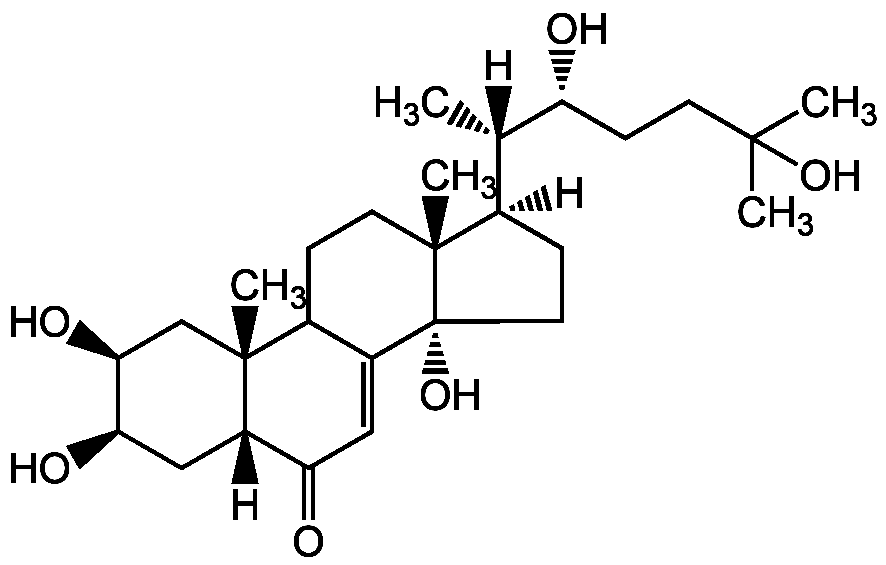
Chemical Structure
Ecdysone
AG-CN2-0071
CAS Number3604-87-3
Product group Chemicals
Estimated Purity>95%
Molecular Weight464.6
Overview
- SupplierAdipoGen Life Sciences
- Product NameEcdysone
- Delivery Days Customer10
- CAS Number3604-87-3
- CertificationResearch Use Only
- Estimated Purity>95%
- Molecular FormulaC27H44O6
- Molecular Weight464.6
- Scientific DescriptionChemical. CAS: 3604-87-3. Formula: C27H44O6. MW: 464.6. Isolated from Ipomoea hederacea. Steroidal prohormone of the major insect molting hormone 20-hydroxyecdysone. A member of the ecdysteroid family. Ecdysone receptor (EcR) agonist. Induces the expression of genes coding for proteins that the larva requires, and it causes chromosome puffs (sites of high expression) to form in polytene chromosomes. Plays a key role in insect development, cell proliferaton, growth and apoptosis by controlling gene expression involved in moulting and metamorphosis. It acts through a heterodimeric receptor comprising the ecdysone receptor and the ultraspiracle proteins (USP). Appears in many plants mostly as a protection agent (toxins or antifeedants) against herbivorous insects. Used for controlled gene expression in scientific research, agriculture and medicine. Used for the development of selective insect growth regulators for use as environmentally benign insecticides. - Steroidal prohormone of the major insect molting hormone 20-hydroxyecdysone. A member of the ecdysteroid family. Ecdysone receptor (EcR) agonist. Induces the expression of genes coding for proteins that the larva requires, and it causes chromosome puffs (sites of high expression) to form in polytene chromosomes. Plays a key role in insect development, cell proliferaton, growth and apoptosis by controlling gene expression involved in moulting and metamorphosis. It acts through a heterodimeric receptor comprising the ecdysone receptor and the ultraspiracle proteins (USP). Appears in many plants mostly as a protection agent (toxins or antifeedants) against herbivorous insects. Used for controlled gene expression in scientific research, agriculture and medicine. Used for the development of selective insect growth regulators for use as environmentally benign insecticides.
- SMILES[H][C@@](C)([C@H](O)CCC(C)(C)O)[C@@]1([H])CC[C@@]2(O)C3=CC(=O)[C@]4([H])C[C@@H](O)[C@@H](O)C[C@]4(C)C3CC[C@]12C
- Storage Instruction-20°C,2°C to 8°C
- UNSPSC12352200

![Ecdysone [3604-87-3]](https://www.targetmol.com/group3/M00/03/1D/CgoaEWY7QhCEXjW6AAAAAJlTp-g797.png)
